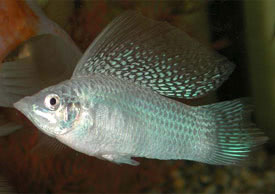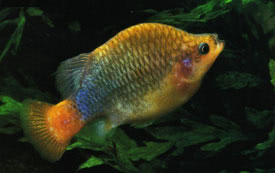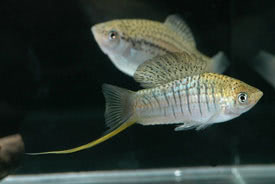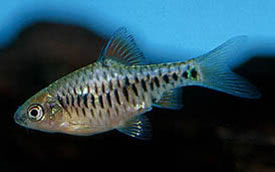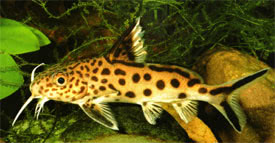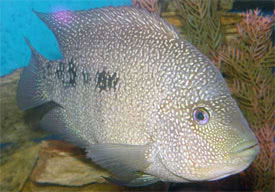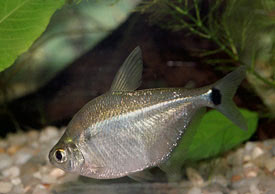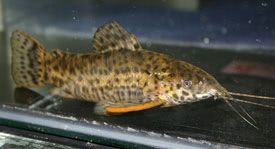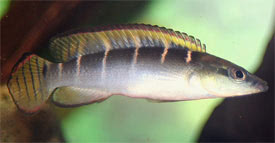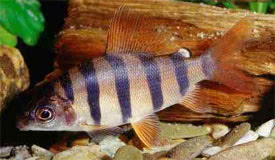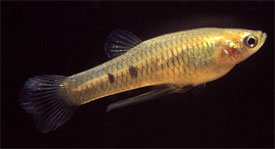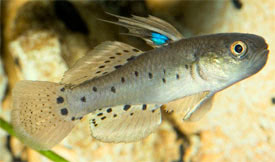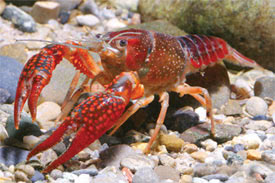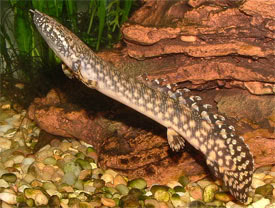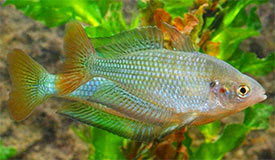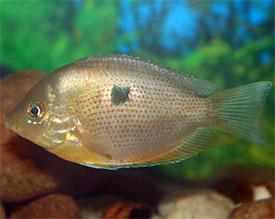
 Magyarul / Hungarian
Magyarul / Hungarian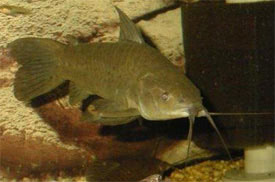
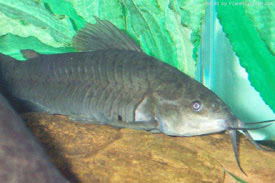

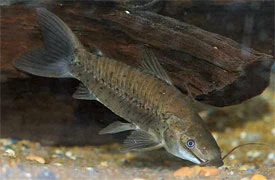
- Scientific name: Hoplosternum littorale
- Synonyms: Callichthys albidus, Callichthys chiquitos, Callichthys laevigatus, Callichthys littoralis, Callichthys melampterus, Callichthys subulatus, Cascadura maculocephala, Cataphractops melampterus, Hoplosternum laevigatum, Hoplosternum littorale daillyi, Hoplosternum schreineri, Hoplosternum shirui, Hoplosternum stevardii
- Common name: Clay hoplo, Cascudo, Armored catfish
- Group: Catfishes
- Habitat: South America, from Argentina to Trinidad
- Size: 22 cm
- Biotope: In shallow, muddy waters dense with vegetation. Often in swamp areas with low oxygen level.
- Social behavior: Quite peaceful bottom dweller which, as a full grown specimen, will sometimes consider smaller fishes as prey.
- Diet: Omnivorous; worms, tablet foods, leftover food. Plants are not eaten but often uprooted.
- Breeding: Quite easy
- Tank: Minimum 200 litres
- Population: 2-4 fish for 250 litres
- Decoration: Larger Echinodorus plants in pots are a suitable decoration. A mulmy sand corner is important for rooting. Strong filtration. Caves as hiding places, darken the surface with floating plants.
- Temperature: 20-28 °C
- pH: 6-8
- Hardness: 10-20NK°
- Lifespan: 5-12 years
Description: Individuals range in color from dark brown to black. They have 2 pair of barbels. The clay hoplo has two rows of large bony scales running along the length of each side of the body. The armored appearance of this animal gives it the alternate common name armored catfish. During the spawning season the first ray of the pectoral fin of the male is strongly turned upward. This has been often considered as abnormality. Juveniles are quite attractively colored, adults are quite monotonous yellow/gray color (clay colored). This is why this common name is suggested here.
The male builds a bubble nest among the floating plants. Eggs are released by the female below the nest. The male fertilizes them and then takes them into his mouth and blows them up into the floating nest, and guarded for several days. The female is chased away. The larvae hatch after 3 days and should be fed small live foods. However the young also accept flake food particles, tablet food, and freeze-dried food. It has not been determined if the parents cannibalize on the young. Depending on the observations, first the female, and then perhaps the male should be removed from the breeding tank.








